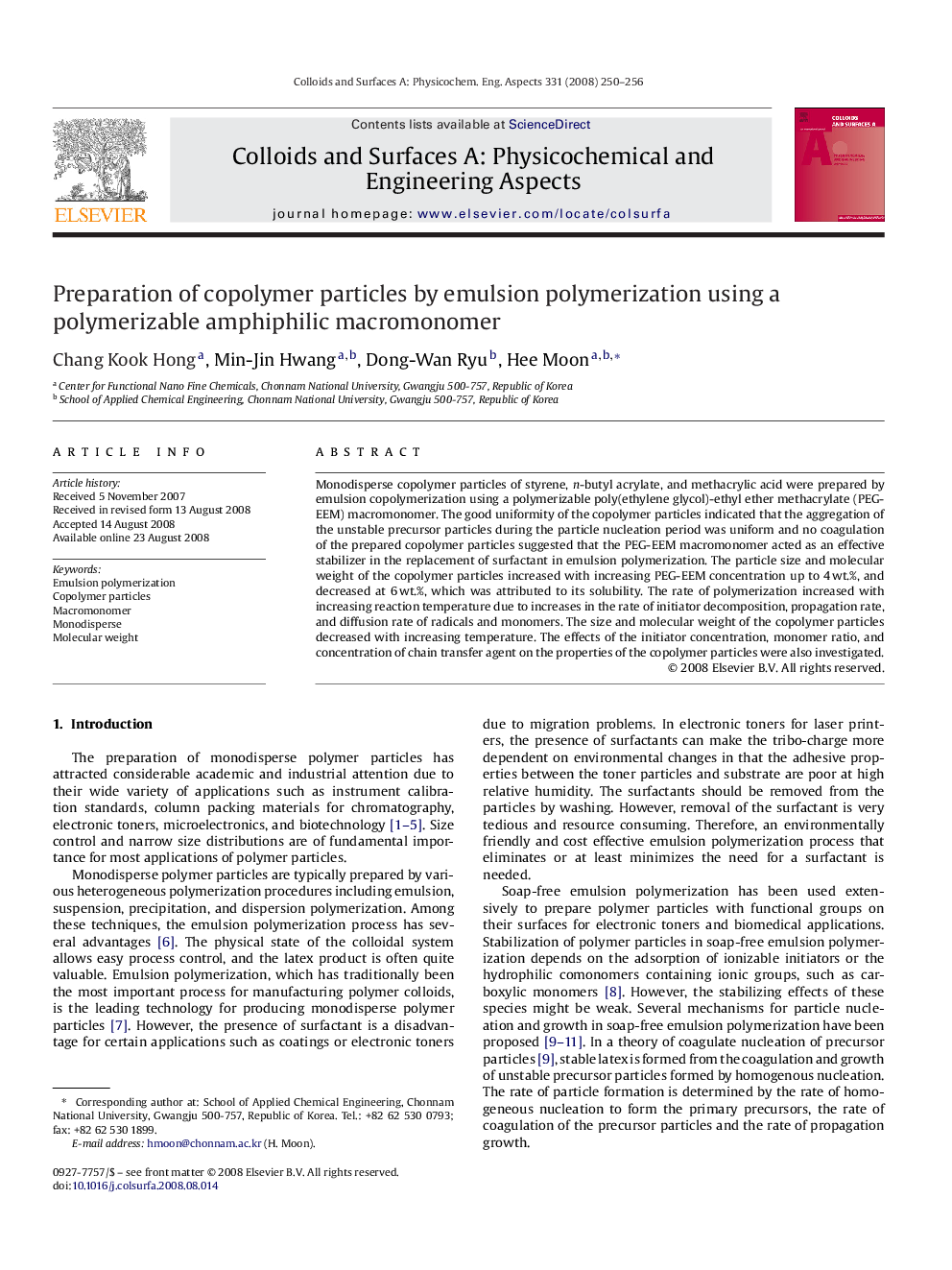| Article ID | Journal | Published Year | Pages | File Type |
|---|---|---|---|---|
| 596304 | Colloids and Surfaces A: Physicochemical and Engineering Aspects | 2008 | 7 Pages |
Monodisperse copolymer particles of styrene, n-butyl acrylate, and methacrylic acid were prepared by emulsion copolymerization using a polymerizable poly(ethylene glycol)-ethyl ether methacrylate (PEG-EEM) macromonomer. The good uniformity of the copolymer particles indicated that the aggregation of the unstable precursor particles during the particle nucleation period was uniform and no coagulation of the prepared copolymer particles suggested that the PEG-EEM macromonomer acted as an effective stabilizer in the replacement of surfactant in emulsion polymerization. The particle size and molecular weight of the copolymer particles increased with increasing PEG-EEM concentration up to 4 wt.%, and decreased at 6 wt.%, which was attributed to its solubility. The rate of polymerization increased with increasing reaction temperature due to increases in the rate of initiator decomposition, propagation rate, and diffusion rate of radicals and monomers. The size and molecular weight of the copolymer particles decreased with increasing temperature. The effects of the initiator concentration, monomer ratio, and concentration of chain transfer agent on the properties of the copolymer particles were also investigated.
